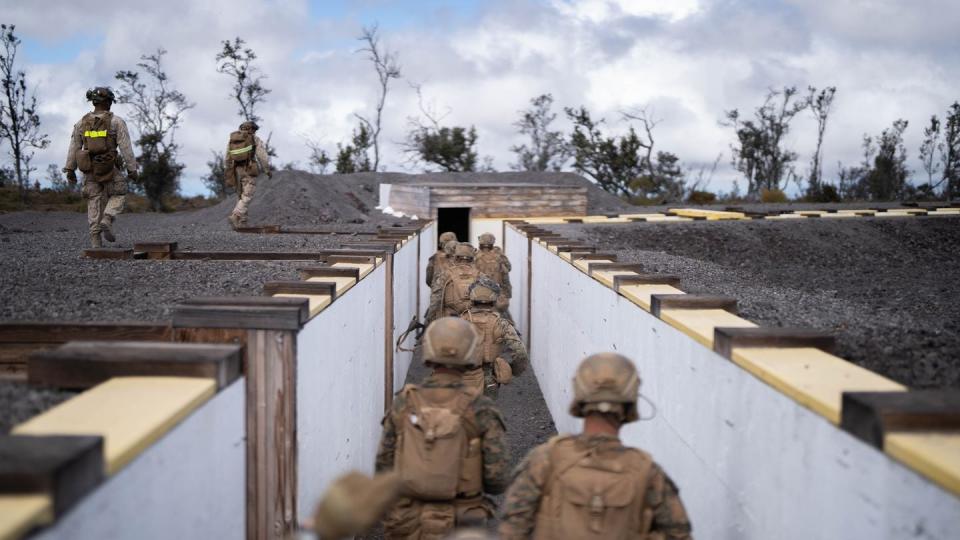New in 2024: Marines build 3rd Littoral Regiment to fight peer threats
The Marine littoral regiment has emerged as the major unit the Corps expects to deliver on the service’s promise to counter peer threats, especially in the Pacific.
Over the next year, two Marine littoral regiments will work toward becoming fully operational and ready for war, if needed.
The Corps redesignated 3rd Marine Regiment to the 3rd Marine Littoral Regiment in March 2022. The unit’s headquarters is at Marine Corps Base Hawaii. It reached initial operational capability in 2023 and is expected to hit full operational capability, meaning fully equipped, staffed and trained, by fiscal year 2025.
In November 2023 the Corps converted the 12th Marine Regiment, an artillery-centric unit in Okinawa, Japan, to the 12th Marine Littoral Regiment.
The third, and as far as force design plans currently note, final Marine littoral regiment in the Pacific, is expected to launch in 2025, likely based on Guam, according to a March 2023 Congressional Research Service report.
The Marine littoral regiments’ major pieces include a command element, littoral combat team, littoral anti-air battalion and combat logistics battalion.
But these regiments are more than a shuffling of the deck of existing Marine units.
Specific systems have been or are being developed to fill out the unit with new capabilities needed to fight peer competitors such as the Chinese military.
Each of the regiments will have:
The Navy-Marine Corps expeditionary ship interdiction system, NMESIS ― a naval strike missile mounted on a joint light tactical vehicle as a ground-based anti-ship weapon for sea denial and control.
MQ-9 Reaper unmanned aerial system ― a medium-to-high altitude, long-endurance drone. The drone’s main mission is to work as a “persistent hunter-killer” on enemy targets. It can also conduct intelligence, surveillance and reconnaissance for the regiment and joint/partner forces.
The AN/TPS 80 Ground/Air Task Oriented Radar, G/ATOR ― the system is an expeditionary, multifunctional radar for air defense and counterfire against enemy drones and cruise missiles.
The light amphibious warship, LAW – the planned ship will work as a low-signature shore-to-shore vessel capable of beaching operations.
Source: Congressional Research Services

The Marine littoral regiments will include 1,800–2,000 Marines and sailors.
The regiments have multiple missions. Those duties include deploying along chokepoints, especially on islands and coastlines.
Shortly after forming in 2022, the 3rd Marine Littoral Regiment used its tools to protect Navy ships during the Rim of the Pacific exercise using sensors, an unmanned truck armed with anti-ship missiles and a fires and air direction unit, Defense News reported.
But the regiment is more than ships, missiles, drones and radars.
In March 2023, the regiment prevented a traditionally organized opposition force from seizing terrain in a training exercise testing the unit’s combine capabilities.
During the three-phase event small teams dispersed across Southern California and set up small, mobile outposts using the Corps’ new expeditionary advanced base operations concepts.
Those teams enabled the larger 3rd Marine division to engage enemy forces at the Marine Corps Air Ground Combat Center at Twentynine Palms, California.
The opposing force, 7th Marine Regiment, had been tasked to assault 3rd Marine Littoral Regiment and 3rd Marine Division by seizing three objectives. They were unable to seize any, Marine Corps Times previously reported.

